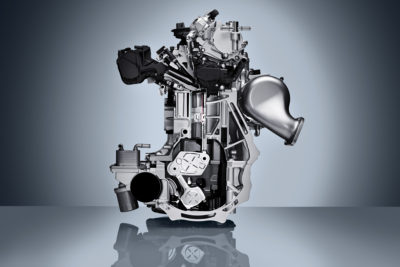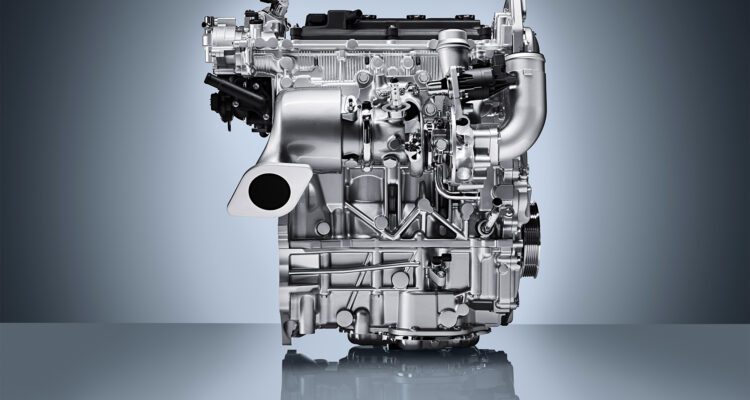Infiniti has announced at the 2016 Paris Auto Show that their next generation of vehicles will be powered by a new variable compression ratio engine. The 2.0 litre turbocharged 4-cylinder, named the VC-Turbo is the world’s first production-ready variable compression ratio engine and it has already undergone extensive testing with the equivalent of three million kilometres during design development and 30,000 hours (the equivalent of five million kilometres) on the test bed. Now it is in its final stages with real road testing.

This remarkable engine is a design breakthrough in the conventional 4-stroke combustion engine design and it is able to vary the compression ratio from between 8:1 to 14:1 as you drive. Typically, low compression engines are used in conjunction with turbocharging or supercharging (this engine is turbocharged) for performance applications, where the low compression reduces the possibility of engine damaging detonation or pre-ignition yet has a high volumetric efficiency for maximum power. Under hard acceleration or heavier engine loads such as passing another vehicle or driving up a hill, the engine shifts to a lower compression ratio. This results in higher performance from the engine.
High compression engines provide maximum efficiency when light loads are placed on the engine, such as during cruise steady state driving, deceleration and idle. Because the VC-Turbo engine can vary between these ratios, the engine provides the best of both worlds: high power or high efficiency and can be tailored automatically to all driving conditions.
There have been many attempts at building variable compression ratio engines and some are already in use in fuel research labs to test the octane rating of gasoline, but these are simple one cylinder engines not suitable for powering an automobile. The variable compression ratios on the VC-Turbo engine are created by varying the height of the piston travel in the engine cylinders. To do this, the conventional connecting rod in the engine has been replaced by a bellcrank assembly that bolts onto the engine crankshaft. One end of the bellcrank is connected to the piston with a link similar to a connecting rod, while the other end of the bellcrank is connected by another link to an eccentric shaft in the bottom of the engine. By changing the position of the eccentric shaft, it changes the position of the bellcrank assembly and thus the height of the piston travel in the cylinder. Infiniti calls this design a multi-link assembly.
This concept might be hard to grasp when put into words but a picture makes the sequence much clearer. Another way of thinking of it is to think of a teeter-totter. Imagine the piston on one end of the teeter-totter, the pivot in the center is the crankshaft and the other end of the teeter-totter is connected to an eccentric. Instead of an eccentric, imagine placing a wooden block under the end of the teeter-totter. This would decrease the movement of the piston at the other end. If you removed the block and dug a hole beneath the one end, the piston could travel further. That is the basic concept, but instead of blocks and holes, the change is caused by rotating the eccentric shaft. In the actual engine, the eccentric shaft is rotated by another link which is moved by an electric motor connected to a Harmonic Drive® reduction gear and controlled by the engine computer.
In addition to a predicted 27% improvement in economy when compared to similar power in a V6 engine, the engine will dramatically reduce CO2 emissions and the design produces less vibration and quieter operation than a conventional four cylinder engine.
The variable compression ratio design is complemented with variable camshaft timing to let the engine operate in an Atkinson Cycle for better efficiency during light load conditions and along with the turbocharging, it utilizes both direct and port fuel injection.
The new engine’s block and cylinder are made from aluminum alloys, with the multi-link components manufactured in a high-carbon steel alloy. The engine is 25 kilograms lighter and smaller than Infiniti’s existing VQ V6 engine which helps to improve performance and vehicle fuel economy.
Infiniti has been working on variable compression technology for more than twenty years and has tested more than 100 designs in its quest to perfect the technology. They tell us this VC-Turbo engine will be brought to the market for sale in 2018.



